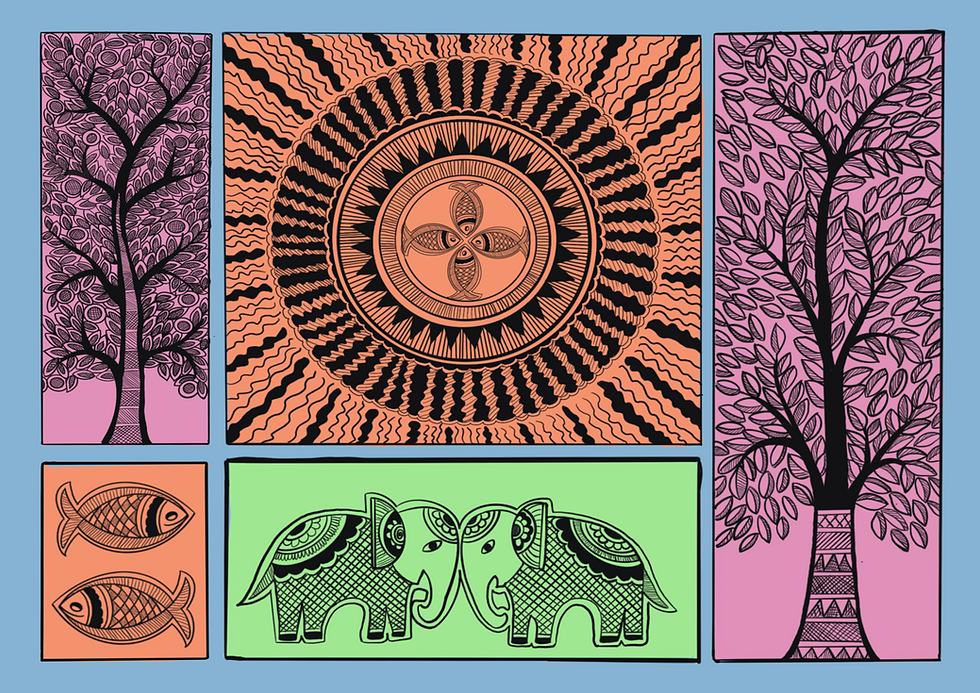Drawing from Memory: The Art of Madhubani
- Serena Attri
- Jul 13, 2025
- 2 min read
Updated: Sep 11, 2025

For the first post on Thoughtfully Crafted, I wanted to begin with an art form that holds everything this space stands for: process, intention, cultural rootedness, and creative expression that lives beyond aesthetics.
Madhubani painting, also known as Mithila art, originates from the Mithila region of Bihar, India. Traditionally painted on the walls and floors of homes during festivals and ceremonies, it is a visual language that has long belonged to the women of the community, passed down through generations.
What drew me in first was the line work: intricate, repetitive, unwavering. The use of natural dyes. The flat, symbolic compositions. The way each painting carries not just a visual story, but also the marks of its maker, sometimes literally signed with a thumbprint.
Growing up in New Delhi, I remember walking through Dilli Haat market with my family, a place vibrant with textiles, spices, handmade goods, and stalls overflowing with endless Madhubani paintings. I did not know it then, but those images planted something in me- a memory of colour and repetition that has quietly stayed.
But what stays with me is this: Madhubani is not just a painting style. It is a worldview. One where mythology, ecology, domestic ritual, and community memory are all folded into form, made with care, not for commerce but for connection.
There is something radical in that quiet, circular rhythm of pattern and purpose. A reminder that art can be a kind of prayer, and that ornamentation can be a form of resistance, keeping culture alive by embedding it into the everyday.
In a time when many traditional crafts risk being reduced to surface aesthetics or forgotten altogether, it feels more important than ever to foster and protect art forms like Madhubani. These are not just design traditions; they are vessels of heritage, storytelling, and identity. Preserving them means honouring the communities and memories they come from.
For this post, I have created a small visual response. A zine that explores how memory lives in patterns. Each shape, inspired by Madhubani motifs, repeats, shifts, and grows, just like memories passed down through time. By using one simple form in different ways, the zine shows how tradition is not fixed but carried, changed, and reimagined. Not a replication, but a reflection, inspired by the layered symmetry, the storytelling structures, and the steady hands behind the work. You will find it below.
“Inspired by Madhubani. Reimagined with respect.”Or you could call it: “A thoughtfully crafted response.”
I would love to know: are there traditions or art forms in your own heritage that carry this kind of lived ritual or intergenerational memory?
Let us begin this conversation slowly and thoughtfully.




Comments